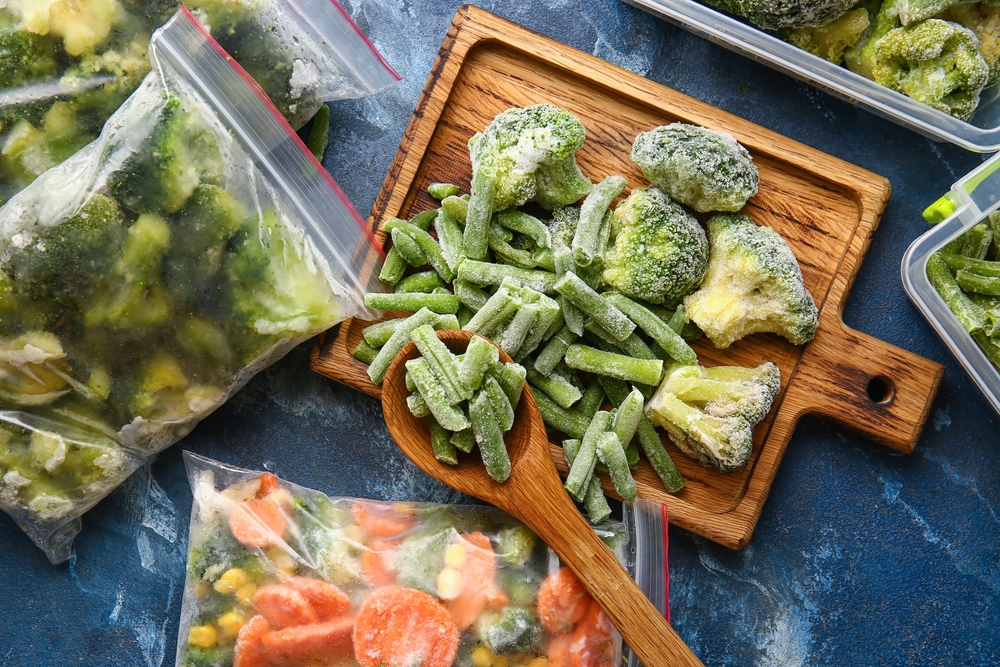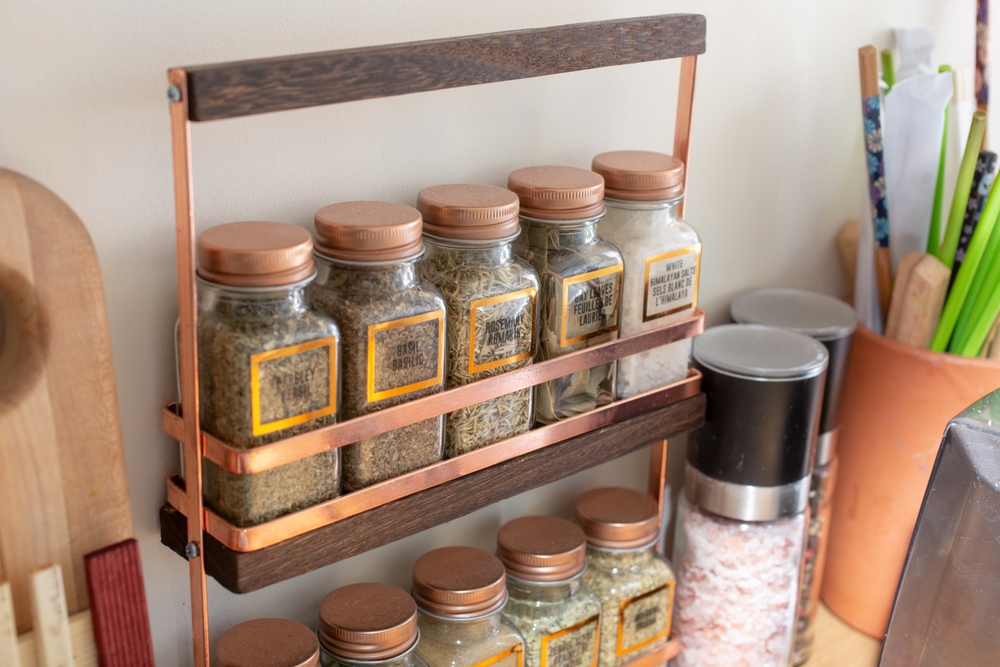Saving money on groceries doesn’t mean sacrificing flavor or nutrition. With a few strategic swaps, you can keep your bank account healthy while enjoying delicious meals. It’s all about being smart with your choices and knowing where you can cut costs without cutting corners on taste. Here are 14 budget-friendly food swaps that can help you save hundreds each month without compromising on quality.
1. Switch Out Beef for Lentils

Beef can be a major expense in your grocery shopping, especially when you’re aiming for quality cuts. Swapping beef for lentils not only helps your budget but also provides a hearty dose of plant-based protein. Lentils cook quickly and can easily adapt to most recipes that call for beef, from stews to tacos. Plus, they have a long shelf life and are a staple in many cuisines around the world.
A study from the Journal of Food Science found that lentils offer a variety of essential nutrients, such as iron and fiber, that rival those found in beef. Lentils are also environmentally friendly, requiring less water and land for production. You’ll find that integrating lentils into your meals is not only budget-savvy but also aligns with sustainable eating practices. With a bit of seasoning, they transform into a flavorful and satisfying alternative to beef.
2. Choose Frozen Vegetables Over Fresh

Fresh vegetables can be pricey, especially when they’re not in season. Instead, opt for frozen vegetables, which are often harvested at peak ripeness and flash-frozen to preserve nutrients. They’re a convenient and cheaper option, allowing you to have a variety of vegetables on hand without the worry of spoilage. Whether it’s stir-frying, roasting, or steaming, frozen veggies can seamlessly fit into your meals.
It’s important to note that frozen vegetables can sometimes be more nutritious than their fresh counterparts. When produce sits on shelves or in your fridge, it loses nutrients over time. Frozen vegetables retain their vitamins and minerals, offering a consistent nutritional boost. Plus, the cost savings can quickly add up, freeing up money for other grocery essentials.
3. Use Canned Fish Instead of Fresh

Fresh fish is a fantastic source of omega-3 fatty acids but can be prohibitively expensive. Canned fish like tuna, salmon, or sardines provide the same health benefits at a fraction of the cost. They’re versatile and convenient, making them a staple for quick meals such as salads, sandwiches, or pasta dishes. With canned fish, you have a longer shelf life, reducing the risk of waste.
According to nutrition expert Dr. Andrew Weil, canned fish retains much of its nutritional value and is a practical alternative to fresh fish. Not only do you maintain the heart-healthy benefits, but you also minimize the expense. Incorporating canned fish into your meal rotation is a savvy choice for maintaining both your diet and budget. Explore different recipes to find new ways to enjoy this cost-effective alternative.
4. Trade Almond Milk for Oat Milk

Almond milk is a popular dairy alternative, but it can be pricier compared to oat milk. Oat milk is not only budget-friendly but also creamy and rich, making it a fantastic substitute in coffee, smoothies, and baking. It’s more environmentally sustainable as well, given oats require less water to grow compared to almonds. By making this swap, you’re doing your wallet and the planet a favor.
Oat milk is also a great source of fiber, which is typically absent in almond milk. The added fiber content can aid in digestion and keep you feeling fuller longer. With its neutral taste, oat milk won’t overpower your dishes, making it a versatile choice for various recipes. Find your favorite brand or try making oat milk at home for an even more cost-effective option.
5. Replace White Rice with Quinoa

White rice is a staple in many households, but swapping it for quinoa can offer more nutritional value for just a bit more cost. Quinoa is packed with protein, fiber, and essential amino acids, making it a more nutritious option. It can be used in similar ways as rice, such as in stir-fries, salads, or as a side dish. With its nutty flavor and satisfying texture, quinoa elevates any meal it accompanies.
The Harvard School of Public Health highlights quinoa as a healthy grain option that supports heart health and weight management. While it may seem like a small jump in cost, the nutritional benefits far outweigh the price difference. Quinoa’s versatility allows you to experiment with various cuisines and cooking methods. As you integrate it into your diet, you’ll notice an enhancement not only in taste but also in overall wellness.
6. Opt for Whole Chicken Instead of Chicken Breasts

Buying chicken breasts can rack up your grocery bill, especially if you’re feeding a family. Instead, purchase a whole chicken, which is generally cheaper per pound and offers more meals. You can roast it, use it in soups, or shred it for sandwiches and tacos. Additionally, you can use the bones to make a rich, flavorful broth, maximizing your purchase.
Cooking with a whole chicken might seem intimidating, but it’s a skill worth mastering. It provides versatility and allows you to experiment with different cooking methods and flavors. The leftover meat can be frozen for future use, extending its utility. As you become more comfortable with this swap, you’ll appreciate not just the savings but the deeper flavors it brings to your dishes.
7. Choose Generic Brands Over Name Brands

Name-brand products often come with a higher price tag that doesn’t necessarily translate to higher quality. Generic brands can offer the same taste and nutrition at a significantly lower cost. Most grocery stores have their own line of products that includes everything from pasta to canned goods. By opting for these, you can shave a considerable amount off your grocery bill.
Consumer Reports found that many generic brands match the quality of their name-brand counterparts, often being produced by the same manufacturers. This is an easy switch that doesn’t require any sacrifice in terms of taste or quality. Once you start comparing labels, you’ll notice how similar they often are, making the savings even more satisfying. Try substituting one or two items and watch your grocery savings grow.
8. Swap Out Fresh Herbs for Dried

Fresh herbs can elevate a dish but purchasing them can also add up over time. Dried herbs, while less potent, are significantly cheaper and last much longer. Keeping a stock of dried basil, oregano, and thyme in your pantry ensures you always have a flavor boost at hand. A pinch of this or a dash of that, and your meals will still be rich in taste without the fresh-herb price.
The key to using dried herbs effectively is to add them earlier in the cooking process, allowing their flavors to infuse. Some people prefer to balance the use of dried with fresh by growing their own herbs, which can be a fun and rewarding project. Either way, be mindful of the conversion, as dried herbs are more concentrated. Embracing dried herbs is a cost-effective strategy for maintaining culinary creativity.
9. Use Powdered Peanut Butter Instead of Regular

Regular peanut butter can be high in calories and fats, potentially causing you to go through jars faster than you’d like. Powdered peanut butter is a lower-calorie alternative that lasts longer and is just as versatile. You can easily rehydrate it with water to make spreads, or add it directly to smoothies and baking for a protein-rich boost. This swap helps control portion sizes and reduces waste simultaneously.
Beyond being budget-friendly, powdered peanut butter is also an excellent pantry staple for those looking to cut down on sugar and fat intake. It retains the rich peanut flavor without the added oils and preservatives found in some regular peanut butters. For those who enjoy experimenting in the kitchen, it opens up a range of culinary possibilities from savory sauces to decadent desserts. Trying this swap just might change the way you see one of your favorite pantry items.
10. Replace Store-Bought Snacks with Homemade

Pre-packaged snacks are convenient but often come with a higher price and less nutritional value. By making your own snacks at home, you can customize them to your taste and dietary needs while saving money. Think homemade granola, energy balls, or even popcorn seasoned to your liking. It’s not only a healthier choice but also a fun activity that can involve the whole family.
Homemade snacks allow you to control the ingredients, ensuring you’re consuming fewer preservatives and artificial flavors. Stock up on bulk ingredients like oats, nuts, and dried fruits to have the makings for various snacks at your fingertips. The initial investment may seem more costly, but the long-term savings and health benefits are undeniable. Plus, you get the added satisfaction of knowing exactly what’s in your food.
11. Choose Local Produce Over Imported

Imported produce can be more expensive due to transportation costs and tariffs. Opting for local, in-season produce supports local farmers and often guarantees fresher, more affordable options. Visiting a farmer’s market or joining a community-supported agriculture (CSA) program can offer quality produce at reduced prices. Plus, you might discover new fruits and vegetables that you wouldn’t typically buy.
Local produce often requires less travel, meaning it’s fresher and better for the environment. By shopping seasonally, you gain access to fruits and vegetables at their peak flavor and nutrition. Engaging with local vendors can also provide insights into cooking methods and storage tips for unfamiliar produce. Embrace this swap to enjoy both savings and a more connected community experience.
12. Substitute Greek Yogurt for Sour Cream

Sour cream is a creamy delight, but Greek yogurt offers a healthier and often cheaper alternative. With its high protein content and lower fat, Greek yogurt can step into most roles that sour cream plays in your kitchen. Whether it’s dolloped on tacos or stirred into soups, it provides a similar tangy creaminess without the extra calories. Plus, it can double as a breakfast staple with fruits and nuts.
Greek yogurt also contains probiotics, which are beneficial for gut health, giving it an edge over regular sour cream. Its versatility extends beyond savory dishes to baking, where it can add moisture and a subtle tang. Try experimenting with different brands to find your preferred taste and texture. You might find this swap stays in your routine even if sour cream goes on sale.
13. Replace Bottled Water with a Filter

Bottled water can be a deceptive expense that adds up more quickly than you’d think. Investing in a good water filter not only reduces your plastic footprint but also saves you a significant amount of money over time. With filtered water, you gain convenience and access to clean drinking water straight from your tap. Whether you choose a filter pitcher or a faucet attachment, this is a swap that benefits both your wallet and the planet.
Many filters are designed to remove impurities while maintaining beneficial minerals, ensuring your water tastes clean and refreshing. Most filters have a capacity of hundreds of gallons before needing replacement, making them a long-term investment. By eliminating bottled water from your grocery list, you’ll reduce clutter and the hassle of recycling. Plus, having filtered water readily available encourages more consistent hydration.
14. Opt for Spices Instead of Ready-Made Sauces

Ready-made sauces offer convenience but can be pricey and filled with preservatives. By investing in a collection of spices, you can create your own sauces and marinades tailored to your taste preferences. Spices like cumin, paprika, and coriander can transform basic ingredients into a flavorful feast. It’s a chance to explore different cuisines and cooking techniques, all while saving money.
Building a spice rack may seem daunting, but starting with a few versatile options can open up many culinary possibilities. As you become comfortable with spicing your dishes, you’ll likely find that you don’t miss the bottled counterparts. Spices are typically more cost-effective and have a long shelf life, making them a smart pantry investment. This swap encourages creativity in the kitchen, allowing you to infuse your meals with unique and varied flavors.
This article is for informational purposes only and should not be construed as financial advice. Consult a financial professional before making investment or other financial decisions. The author and publisher make no warranties of any kind.








